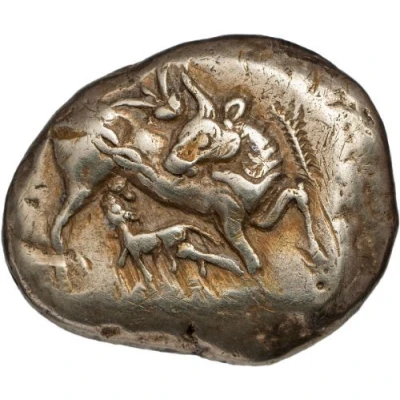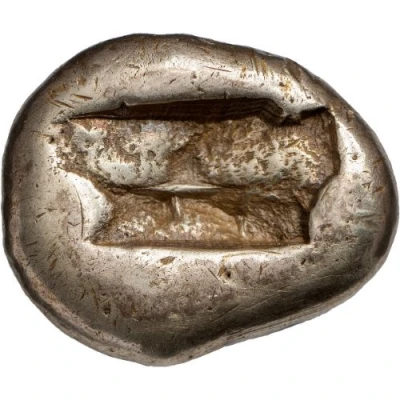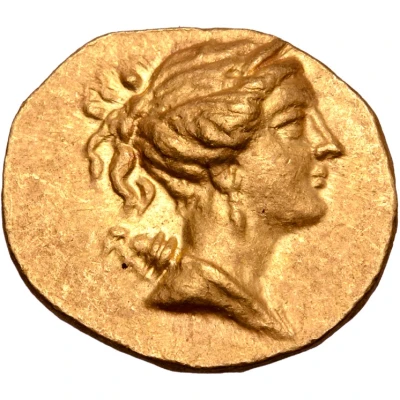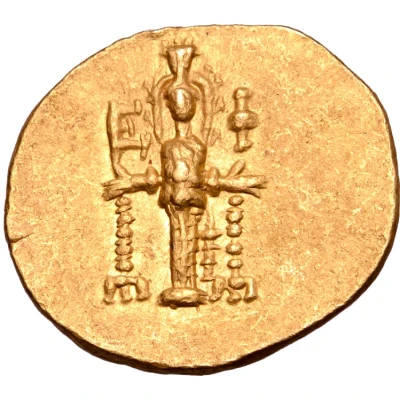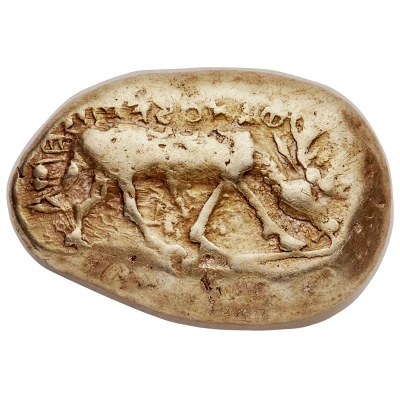
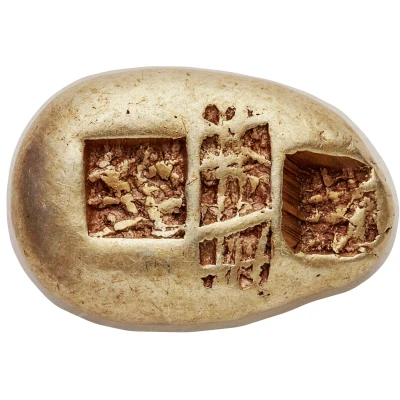

Stater 625 BC - 600 BC
| Electrum | 14.14 g | 23 mm |
| Issuer | Ephesos (Ionia) |
|---|---|
| Type | Standard circulation coin |
| Years | 625 BC - 600 BC |
| Value | Stater (20) |
| Currency | Drachm |
| Composition | Electrum |
| Weight | 14.14 g |
| Diameter | 23 mm |
| Shape | Round (irregular) |
| Technique | Hammered, Incuse |
| Demonetized | Yes |
| Updated | 2024-10-10 |
| Numista | N#181943 |
|---|---|
| Rarity index | 97% |
Reverse
Two square incuse punches flanking rectangular incuse, all with linear cross-hatch patterns within.
Comment
Milesian standard.
One of the earliest recorded coins to bear both a type and inscription. The Phanes coinage falls into seven denominations, from the (extremely rare) full stater down to a 1/96 stater, all featuring the stag in various poses; only the full stater and third-stater or trite are inscribed. The early date of the issue is confirmed both by the archaic artwork and legend (some of the Greek letters are of early form, and the die engravers had not yet learned to reverse their inscriptions in the die so as to read correctly on the struck coin), and the discovery of a fraction from the same series in a votive deposit in the foundations for the Temple of Artemis at Ephesus, which commenced construction prior to 550 BC. If indeed a person, the "Phanes" named on this piece is likely unknown to history: He might have been a Carian or Ephesian treasury minister of the later 7th century BC, or a private individual wealthy enough to strike his own coinage. Wolfgang Kastner, in SNR 65 (1986), points out that, grammatically, "Phanos" (as on the staters and halves) or "Phaneos" (as rendered on electrum trites) cannot be the genitive of the male name Phanes. He theorizes that the legend refers to a goddess called "Phano" or a place name. An alternative reading of the legend as "I am the tomb of light" has also been proposed, supporting the possibility that the name and types refer to a divinity, perhaps Apollo-Phaneos (light-bringer) or Artemis (due to the stag).
Interesting fact
The Ephesos Stater was one of the first coins to feature an image of a living creature, in this case, a lion. This was a bold move away from the traditional abstract designs that were common on coins at the time, and it paved the way for the use of animal motifs in future coinage.
